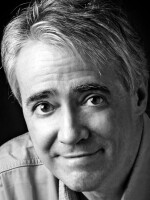SCOTT SIMON, HOST:
Ed Dwight, who trained to be America's first Black astronaut six decades ago, has finally made it to space.
(SOUNDBITE OF ARCHIVED RECORDING)
UNIDENTIFIED PERSON #1: Command engine start - two, one, zero, ignition. And liftoff.
UNIDENTIFIED PERSON #2: Liftoff.
(CHEERING)
SIMON: Wow, indeed. On Sunday, Mr. Dwight was one of six passengers aboard Blue Origin's NS-25 passenger shuttle. It rose 66 miles into the big, blue Texas sky and past the Karman line that marks the edge of space.
Ed Dwight is 90 years old and has thus become the oldest person to travel in space. He joins us now from his home in Denver. Mr. Dwight, welcome back to Earth.
ED DWIGHT: Well, thank you very, very much. It's good to be back, but it was also good to be up.
SIMON: What was it like floating in space?
DWIGHT: Well, you know, I had my imaginations during my flight test career that was titilting with the edge of space - some of my test missions and stuff. But it was in an airplane. And here I got in the spaceship. When the capsule separated, there was some real loud explosion sounds, and it was startling. And I thought we had bumped into something up there (laughter). Of course, from there, we were weightless.
SIMON: What happened 60 years ago? You were an Air Force captain, test pilot.
DWIGHT: Right.
SIMON: Aerospace research pilot school that trained astronauts recruited you. What happened?
DWIGHT: Oh, I was a captain and the youngest. You know, and I was flying five different airplanes, working on my master's degree in astrophysics. You know, and I was just on a roll. And I got this letter asking me if I was interested in this first Negro astronaut thing. And my first inclination was a hell no because NASA hadn't even been packaged and performed. It didn't start till '58. And here, we're in 1961, '62, and everybody thought that all the astronauts were going to get killed.
So I told them no until I found out what the whole project was about - trying to train Black kids as engineers and scientists. Then I got fascinated, with the encouragement of my mother, who intervened and told me that I damn well better do this, or else.
(LAUGHTER)
DWIGHT: But anyway, that's how it started. I went into training. The good news about the whole project is I was a performer. And it was going great. To make a long story short, I was doing good with my flying, great with academics and stuff in the program. And so Kennedy - November 22, he got killed...
SIMON: Yeah.
DWIGHT: ...And that killed the program, pretty much.
SIMON: After you left the Air Force, you enrolled in art school. You earned an MFA and have had an extraordinary career as a sculptor.
DWIGHT: (Laughter) When I left, I tried to get into the aerospace industry. I came to them - I went to work for IBM Corporation in the beginning. And so I left there, and I was building condominiums and apartments all over the Metropolitan area. And, lo and behold, I had done some art - leftover of the metal for my construction companies to decorate a house that I bought.
First Black lieutenant governor noted that art in my house and called me to his office and said, I want you to do a sculpture to go into the Capitol. And naturally, I turned him down because I didn't know how to model. You know, I was welding junk together to make art. And he says, you go to the library and teach yourself how to sculpt.
SIMON: (Laughter) Oh, boy. That's an order, sir. Yeah.
DWIGHT: And I got fascinated with it. I've done 132 historical memorials, public art pieces around the country and in Canada.
SIMON: Did you see anything up there that inspires your sculpture, something you might do in the future?
DWIGHT: Well, you know, I never got far away from NASA. NASA started giving me honors and start naming asteroids after me and commissioning me to do art. They've flown several of my sculptures into space. The astronauts - especially the Black astronauts - have honored me as an inspiration as they're coming in the program. So we've all been really, really close. Every mission they've had, they always end up at my studio bringing me back artifacts and stuff.
SIMON: Oh. Mr. Dwight, what can we see from outer space that we could all learn from?
DWIGHT: You look at the United States of America. All these states where half of them are red, and the other part are blue. From space, there's no dividing line there. It's all just one mass of Earth. And so why in the world do we have two groups of people that can't get along with each other? It makes no sense.
I wish that every single person that was elected to national office is required to take three orbits around this Earth. And you'll see that there is no dividing things between these countries. There's no dividing line between Russia and Ukraine and China and Taiwan. This whole thing is integrated together. And if we don't do something to protect this thing, we can easily destroy it.
SIMON: Ed Dwight, who has had a long and extraordinary, multifaceted career and now at the age of 90 is astronaut Ed Dwight.
DWIGHT: Oh, boy. I like that (laughter).
SIMON: Yeah. Well, thanks so much for speaking with us.
DWIGHT: Thanks for caring.
(SOUNDBITE OF ALEXANDRA STRELISKI'S "PLUS TOT") Transcript provided by NPR, Copyright NPR.
NPR transcripts are created on a rush deadline by an NPR contractor. This text may not be in its final form and may be updated or revised in the future. Accuracy and availability may vary. The authoritative record of NPR’s programming is the audio record.



